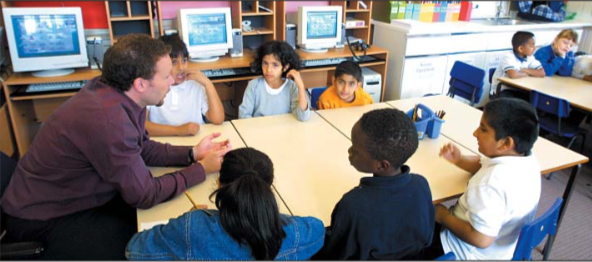
Do classroom seating arrangements make any difference to learning? Research on the subject is limited, being mostly primary school-based and American. The small body of English writing on the subject is mainly from the eighties (Wheldall et al 1981; Bennett & Blundell 1983; Moore & Glyn 1984; Wheldall & Lam 1987) and makes a marginal contribution to the ongoing debate on primary school teaching methods which has raged since Plowden (DES 1967).
In these research studies the performance of students taught clustered around tables emerges as a poor second to that of students taught in rows. These four studies also mapped student reaction to whole-class teaching, and the clear conclusion from each was that this style of pedagogy was best facilitated by a classroom arranged in rows. One of the writers, however, suggested that “classroom seating arrangements can be systematically manipulated so as to provide an optimal environment for a particular task to be achieved and for desirable behaviours to be encouraged” (Wheldall & Lam 1987).
In secondary schools, however, the reality is that teachers invariably start teaching with the seating arrangement they find when they enter a room.The rearrangement of the room (for group work, for example) is often hurried and noisy and can make it difficult for the teacher to keep control of the class. Students can take time to re-settle and, where group work is an exception rather than commonplace, they may never re-settle.
A concern to learn more about students’ views on classroom organisation and to optimise the potential of seating arrangements led an east midlands upper school to commission research on classroom seating arrangements (Beresford 1995). The school already enjoyed above-average results at both GCSE and A-level but felt that there was still scope for improvement. Teachers were keen to try a range of teaching styles and strategies but felt constrained, particularly by the attitudes of some students. The school wanted to find out why some students reacted negatively to a change of seating arrangements, and hoped that the research might open up discussions about seating arrangements between teachers and students,and thereby lead to positive change.
Groups of four or five students fromYears 10 to 13 – chosen by the school as representative in terms of ability, behaviour levels and gender – were shown three seating arrangements used in the school, and asked for their comments. Arrangement 1 had desks organised in a ‘horseshoe’; arrangement 2 had students grouped around tables or clusters of desks; and arrangement 3 had desks organised in rows.